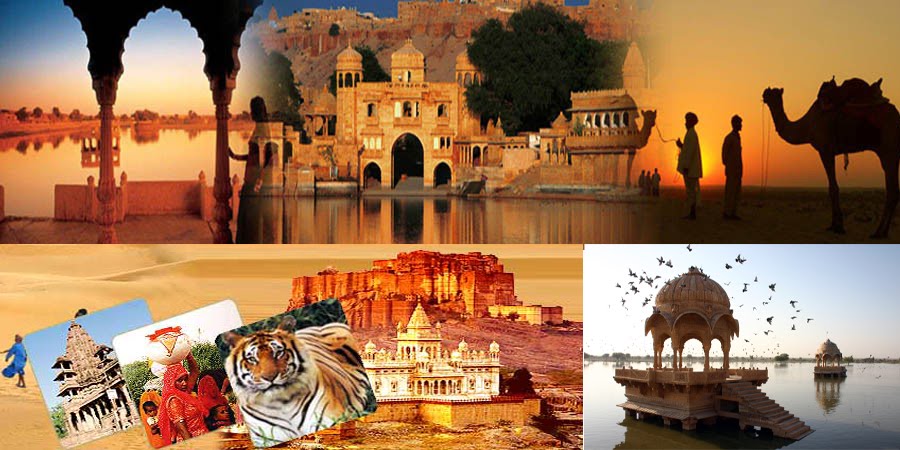Discovering Dungarpur: The Hidden Gem of Rajasthan
Tucked away in the southernmost part of Rajasthan, near the Gujarat border, lies Dungarpur — a lesser-known but mesmerizing destination that blends regal heritage, natural beauty, tribal culture, and serene landscapes. Often overshadowed by the more prominent cities like Jaipur or Udaipur, Dungarpur remains one of Rajasthan’s best-kept secrets. For travelers seeking offbeat experiences, architectural treasures, and a tranquil retreat far from the touristy crowds, Dungarpur is a delightful discovery.
A Brief Introduction
Dungarpur, meaning "City of the Dungars" or "hills", was founded in the 13th century by Rawal Veer Singh, a descendant of the Mewar royal family. The region is nestled in the lap of the Aravalli Hills and enriched by lakes, forests, and rural charm. Historically the seat of the Dungarpur princely state, the city has preserved its aristocratic aura through its palaces, temples, and traditional lifestyle.
Why Visit Dungarpur?
Dungarpur is ideal for history buffs, architecture lovers, bird watchers, nature seekers, and those who wish to experience Rajasthan in its raw and authentic form. It’s a destination that allows you to slow down, soak in centuries of culture, and interact with indigenous tribal communities like the Bhils.
Let’s explore the top attractions and experiences in Dungarpur.
1. Udai Bilas Palace – A Royal Stay by the Lake
Perhaps the crown jewel of Dungarpur, Udai Bilas Palace is a stunning example of Rajput architecture with its scalloped arches, stone carvings, ornate balconies, and Raj-era charm. The palace, once the royal residence, has now been converted into a heritage hotel, allowing visitors to live like royalty.
The palace overlooks the serene Gaib Sagar Lake, offering mesmerizing views and a peaceful ambiance. The palace complex also houses the Ek Thambiya Mahal, a marvel with delicate stone latticework resting on a single pillar.
2. Juna Mahal – The Old Palace
Situated on a hilltop, Juna Mahal (also called the Old Fort) is a seven-story palace built in stages between the 13th and 18th centuries. Unlike typical Rajput forts, Juna Mahal is more of a fortress-palace, made of stone without cement or lime mortar. Its interiors are filled with ancient murals, miniature paintings, glass work, and vibrant frescoes — some of the finest surviving examples of Rajput artistry.
Despite its age and relative obscurity, the palace retains a raw authenticity, and the panoramic views from the top are spectacular.
3. Gaib Sagar Lake and Shrinathji Temple
Gaib Sagar Lake is an expansive man-made lake that enhances the scenic beauty of Dungarpur. On its banks stands the Vijay Raj Rajeshwar Temple, a beautiful shrine dedicated to Lord Shiva, and the Shrinathji Temple, built in a style reminiscent of the famous Nathdwara shrine. These temples attract both pilgrims and photography lovers due to their artistic carvings and tranquil settings.
4. Baneshwar – Spiritual and Tribal Melange
Just 50 km from Dungarpur is Baneshwar, a confluence of spirituality, tribal culture, and festivity. Known as the “Kumbh Mela of the Tribals,” the Baneshwar Fair, held in February, draws thousands of Bhil tribals from Rajasthan, Gujarat, and Madhya Pradesh. The fair is centered around the Baneshwar Mahadev Temple, dedicated to Lord Shiva, and includes devotional music, traditional dances, and community bathing in the river.
This is one of the rare opportunities to witness tribal traditions, attire, and rituals on such a large scale.
5. Bird Watching and Nature Trails
Surrounded by forests, lakes, and the Aravalli hills, Dungarpur is a paradise for bird lovers and nature enthusiasts. Gap Sagar Lake and Fateh Sagar Lake are ideal for spotting migratory and resident birds like herons, kingfishers, cormorants, and even flamingos in winter. The area also has several forest trails perfect for quiet walks, photography, and observing rural life.
6. Cultural Encounters with the Bhil Tribe
Dungarpur’s population includes a significant number of Bhil tribals, who have preserved their distinct culture, music, dance, and lifestyle over centuries. A visit to the surrounding villages provides an authentic glimpse into tribal life. Women dressed in vibrant ghagras, men with turbans and bows, and homes decorated with tribal motifs offer a unique cultural immersion.
Many local organizations and guides offer village tours that promote responsible tourism and direct interaction with the community.
7. Architectural Marvels and Temples
Apart from palaces, Dungarpur is dotted with lesser-known but remarkable temples and structures such as:
-
Govardhan Nathji Temple: Known for its rich carvings and devotional importance.
-
Bhuvaneshwar Temple: Located amidst greenery, it’s a perfect spot for peace and contemplation.
-
Deo Somnath Temple: A 12th-century Shiva temple built entirely of white stone without mortar, showcasing incredible architectural techniques.
How to Reach Dungarpur
-
By Air: The nearest airport is in Udaipur (120 km), with regular flights from major Indian cities.
-
By Train: Dungarpur has a railway station with good connectivity to Udaipur, Ahmedabad, and Jaipur.
-
By Road: Well-connected by road to cities like Udaipur, Ahmedabad, and Mount Abu, making it easy for travelers to include Dungarpur in a Rajasthan or Gujarat itinerary.
Best Time to Visit
The ideal time to explore Dungarpur is between October and March, when the weather is pleasant and suitable for sightseeing. If you're interested in cultural experiences, plan your trip around February during the Baneshwar Fair.





0 comments:
Post a Comment